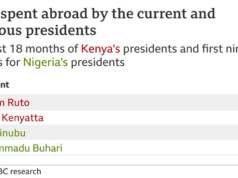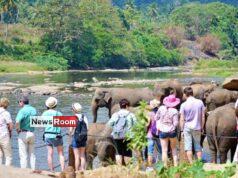Monday 28th August, 2023
There are no signs of the skies opening up anytime soon to end the prevailing drought. The Meteorological Department announced yesterday that some parts of the country might experience scattered showers but there would be no heavy rains in most areas for a few more weeks. Many irrigation reservoirs have already dried up; farmers have suffered extensive crop losses as a result, and are struggling to find water even for drinking. Most of these tanks are said to have been affected by siltation over the years.
Some farmers’ organisations in the Ratnapura District have urged the government to take immediate action to dredge the irrigation reservoirs such as the Udawalawe tank and restore their capacities so that they will hold more water in the future. There are thick layers of silt, which could be used for manufacturing compost, they have said.
A spell of drought is the ideal time for removing silt from reservoirs and canals, as farmers have rightly pointed out. But it is a highly-specialised task that has to be carried out cautiously and scientifically under the supervision of engineers, environmental experts and geologists. Hardly anything is done scientifically in this country.
There is the danger of ruling party politicians making the most of the farmers’ call at issue to enrich themselves and their henchmen at the expense of the irrigation tanks and ecosystems linked to them. Those greedy characters are likely to move in with heavy machinery on the pretext of removing silt and helping farmers, and ruin the reservoir bunds and beds to make a killing. They have earned notoriety for causing widespread environmental destruction in the name of development projects. There have been several such instances during the past few years.
One may recall that in 2021, some environmental groups, the media, and farmers had to fight quite a battle to prevent a foreign company from dredging the Tissawewa haphazardly. The government chose to ignore public protests and the company concerned continued to use heavy machinery for the dredging operation. Finally, Director General of Archaeology Prof. Anura Manatunga intervened to stop dredging; invaluable artifacts are believed to be lying buried in the tank bed.
Haphazard dredging also endangered sensitive ecosystems in and around the Tissa tank, environmentalists said. It may be argued that not all reservoirs are located in areas of archaeological significance, but their ecosystems and safety should be factored in more than anything else when projects are launched to increase their capacities.
Last year, the government disregarded serious concerns expressed by many experts about a yuppification project that affected an ancient reservoir in Polonnaruwa; it ordered the removal of boulders along a section of the ralapanawa (stone liner) of the Parakrama Samudraya for the construction of a walking track, of all things. It was not clear from the urban development panjandrums’ gobbledygook whether a scientific study had been carried out and expert opinion sought prior to the launch of the project.
One may argue that there is nothing wrong with the construction of jogging tracks on river and canal banks or tank bunds, and the public has benefited from such projects in other parts of the country, but that must be done scientifically in consultation with experts.
There have been disturbing reports of politicians handing over tank rehabilitation projects to their henchmen who have no experience whatsoever in the field so that the latter could make money. Some of them have felled trees in and around tanks and sold them.
It behoves the farmers’ organisations and environmental groups to remain vigilant to prevent political dregs and their cronies from ruining the irrigation tanks and the environment under the guise of removing silt and helping the farming community.








